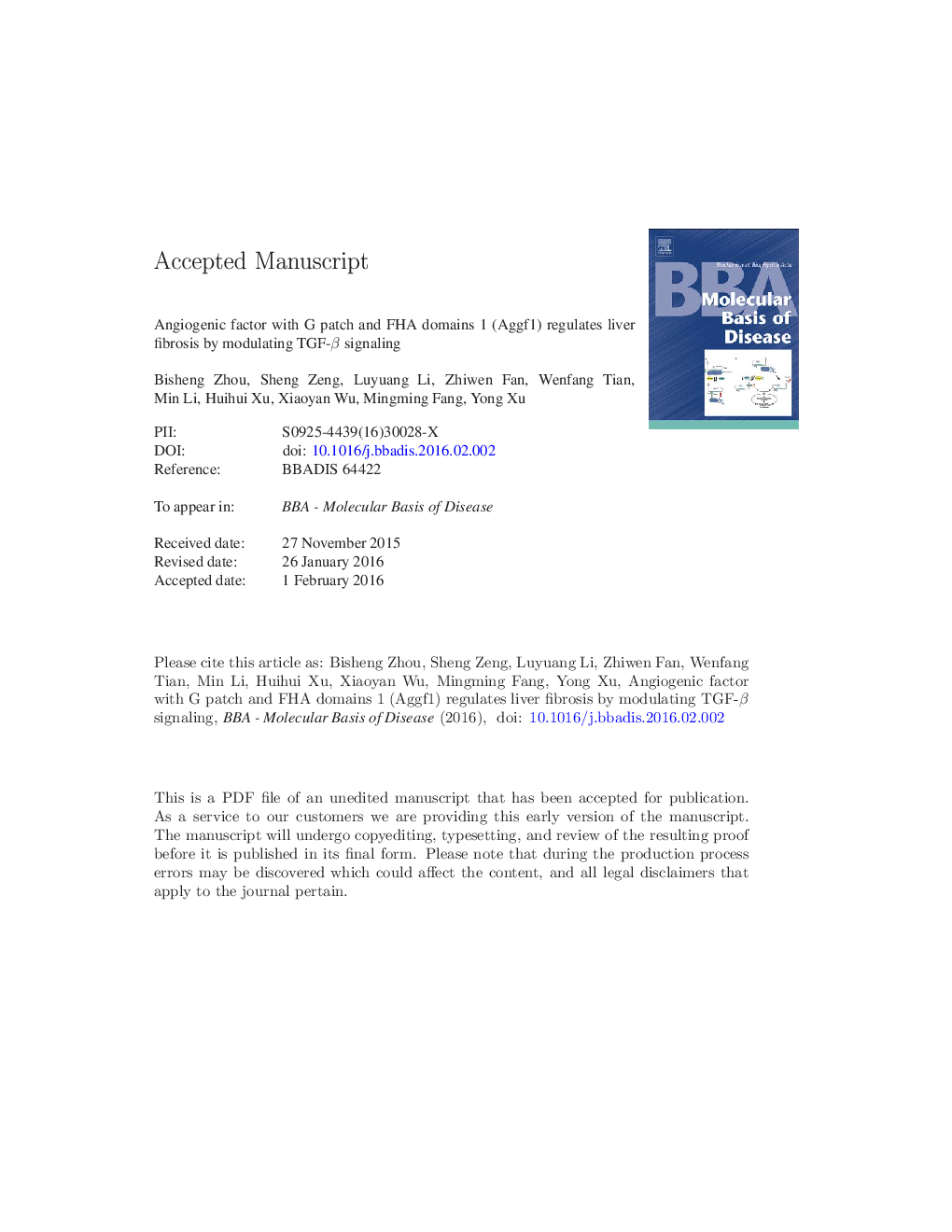| Article ID | Journal | Published Year | Pages | File Type |
|---|---|---|---|---|
| 8259306 | Biochimica et Biophysica Acta (BBA) - Molecular Basis of Disease | 2016 | 30 Pages |
Abstract
Fibrosis is a common pathophysiological process following liver injury and can lead to, if left unattended to, irreversible end-stage liver disease such as cirrhosis. Hepatic stellate cells (HSCs) are a major contributor to liver fibrosis. Here we investigated the involvement of angiogenic factor with G patch and FHA domains 1 (Aggf1) in HSC activation and the underlying mechanisms. Aggf1 expression was down-regulated in the livers in three different mouse models of liver fibrosis following injury. Aggf1 expression was also suppressed in activated HSCs when compared to quiescent HSCs. Over-expression of Aggf1 alleviated liver fibrosis in mice and in cultured HSCs. RNA-sequencing (RNA-seq) analysis performed in HSCs revealed that Aggf1-dependent transcription regulates several key fibrogenic pathways. Mechanistically, Aggf1 regulated liver fibrogenesis by forming a complex with the inhibitor SMAD protein (SMAD7) thereby leading to diminished SMAD3 binding to the pro-fibrogenic gene promoters. On the contrary, SMAD7 knockdown abrogated the effect of Aggf1 and rescued HSC activation. Aggf1 expression was silenced during HSC activation/liver fibrogenesis as a result of DNA methylation. Treatment with a DNA methyltransferase inhibitor (5-Azacytidine) restored Aggf1 expression and repressed liver fibrosis in an Aggf1-dependent manner. In conclusion, our data illustrate a previously unknown role for Aggf1 and shed light on the development of novel therapeutic solutions against liver fibrosis.
Keywords
Related Topics
Life Sciences
Biochemistry, Genetics and Molecular Biology
Ageing
Authors
Bisheng Zhou, Sheng Zeng, Luyuang Li, Zhiwen Fan, Wenfang Tian, Min Li, Huihui Xu, Xiaoyan Wu, Mingming Fang, Yong Xu,
